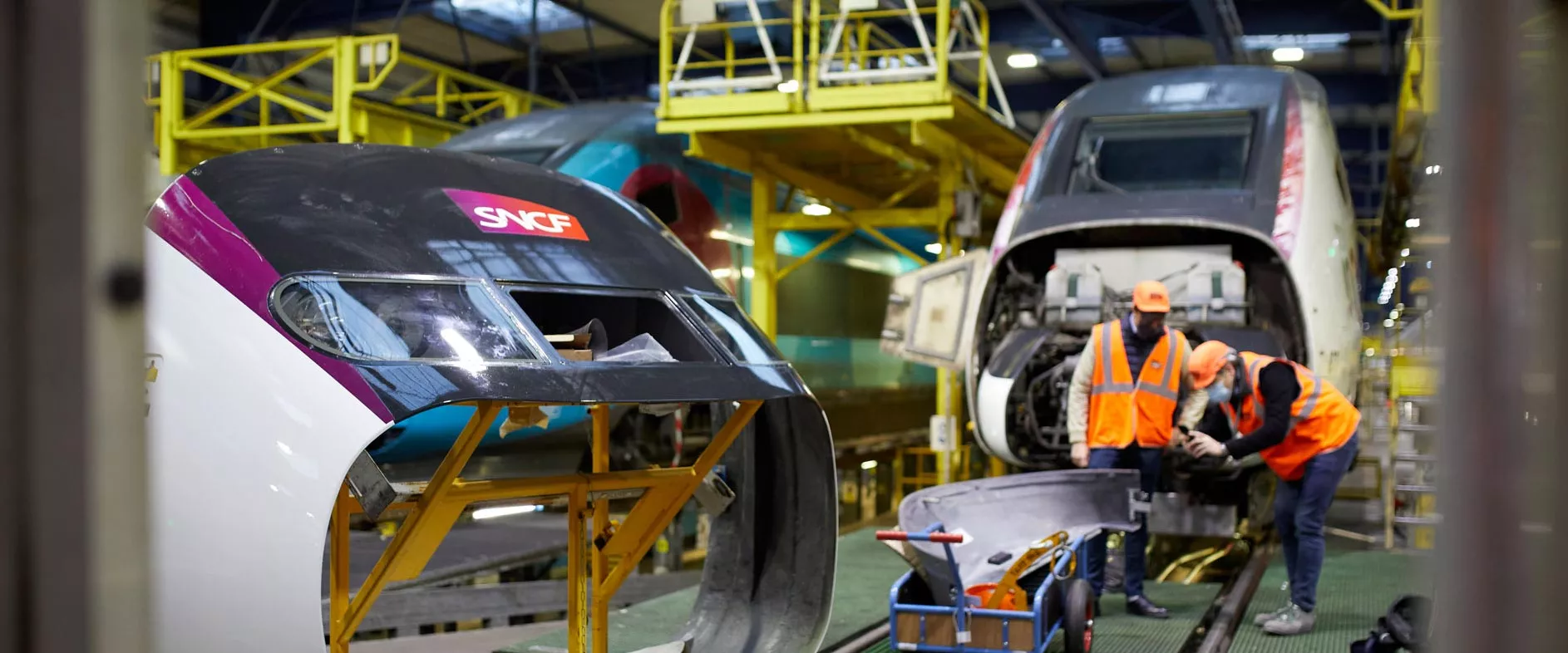
Fighting planned obsolescence in our TGVs
SNCF Voyageurs and its Rolling Stock Division have launched a campaign to extend the life of 104 TGV trainsets by up to 10 years. The move will help accelerate the transport sector’s green transition by increasing the number of TGVs in service
A new lease of life
Our goal is to meet growing demand for rail travel with innovative, economical and eco-friendly solutions. To achieve this, teams at SNCF Voyageurs’ Industrial Operations and Rolling Stock Divisions have launched Operation Anti-Obsolescence (O2D in French)—an initiative designed to extend the lifespan of TGVs.

Our fleet includes
363
TGV trainsets

104
TGV trainsets selected for the O2D operation

22,104
additional passengers seats made available between 2027 and 2034
The benefits of the O2D program
- Trainset service life extended by 2 to 10 years
- More passenger seats available with a larger TGV fleet
- Profitability of refurbished trainsets sustained by optimizing costs
- Lower environmental impact by using recovered parts from dismantled trainsets to extend TGV lifespan
- Timeline met through tight scheduling and efficient industrial teamwork to support rising passenger demand
Much more than a makeover
As part of SNCF’s Train Life Extension Programme (OPPR in French), the O2D upgrades are designed to safely extend the service life of TGVs without compromising reliability. These upgrades also improve passenger comfort and refresh the train’s livery. Our teams carry out detailed studies to identify necessary improvements, optimize resource use, and ensure that timelines and budgets are met. Each trainset selected for renovation is carefully assessed to determine its future role in the fleet.
Three trainset categories
- Trainsets in good condition that continue to run, with upgrades to improve passenger comfort
- Trainsets that require major reliability and refurbishment work to ensure a fully extended service life
- Trainsets scheduled for retirement that are dismantled, with parts reclaimed to repair others.
Rising to the ERTMS challenge
By 2030, certain double-decker TGVs—trainsets not dedicated to specific long-distance routes (RNAI) and bi-current trainsets (R-Bi)—must also be equipped with the European Rail Traffic Management System (ERTMS). This unified signaling and control system is essential to ensure interoperability across Europe’s rail networks, making it a cornerstone of the O2D programme. Integrating ERTMS is a complex technical challenge that requires extensive studies and specialized facilities. To meet this need, a dedicated production line has been established at our Longueau maintenance site in the Somme region of northern France.
Strong commitment to CSR
The O2D initiative also reduces our environmental footprint by delivering:
- Less waste, through the reuse of parts recovered from retired trainsets
- More energy-efficient trains, reducing overall power consumption
- Improved accessibility for passengers with reduced mobility
- Lower carbon emissions, by optimizing use of the existing fleet
Nothing is lost, everything is recovered and reused
The O2D initiative is based on an innovative circular economy model where each decommissioned train becomes a source of parts for trains still in service. Over 3,000 components can be recovered from a single trainset. We are currently piloting the dismantling and parts management process at our Ambronay facility in central France.
t
of CO2e avoided through our circular economy approach
Share the article